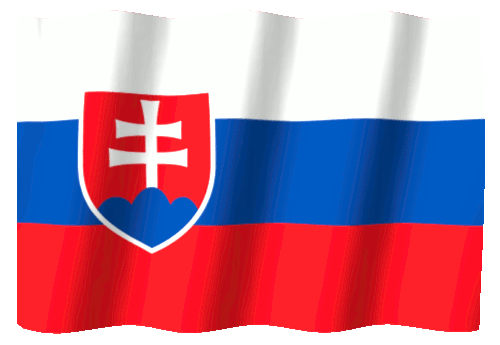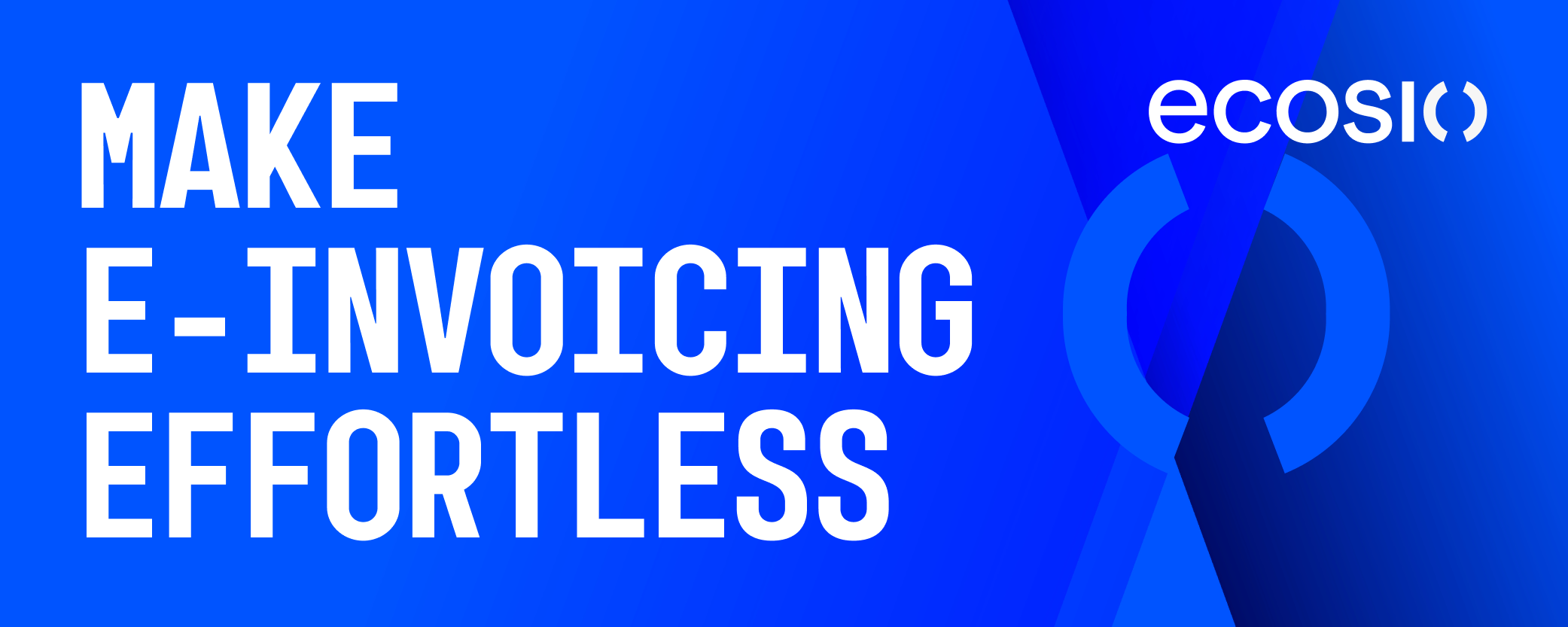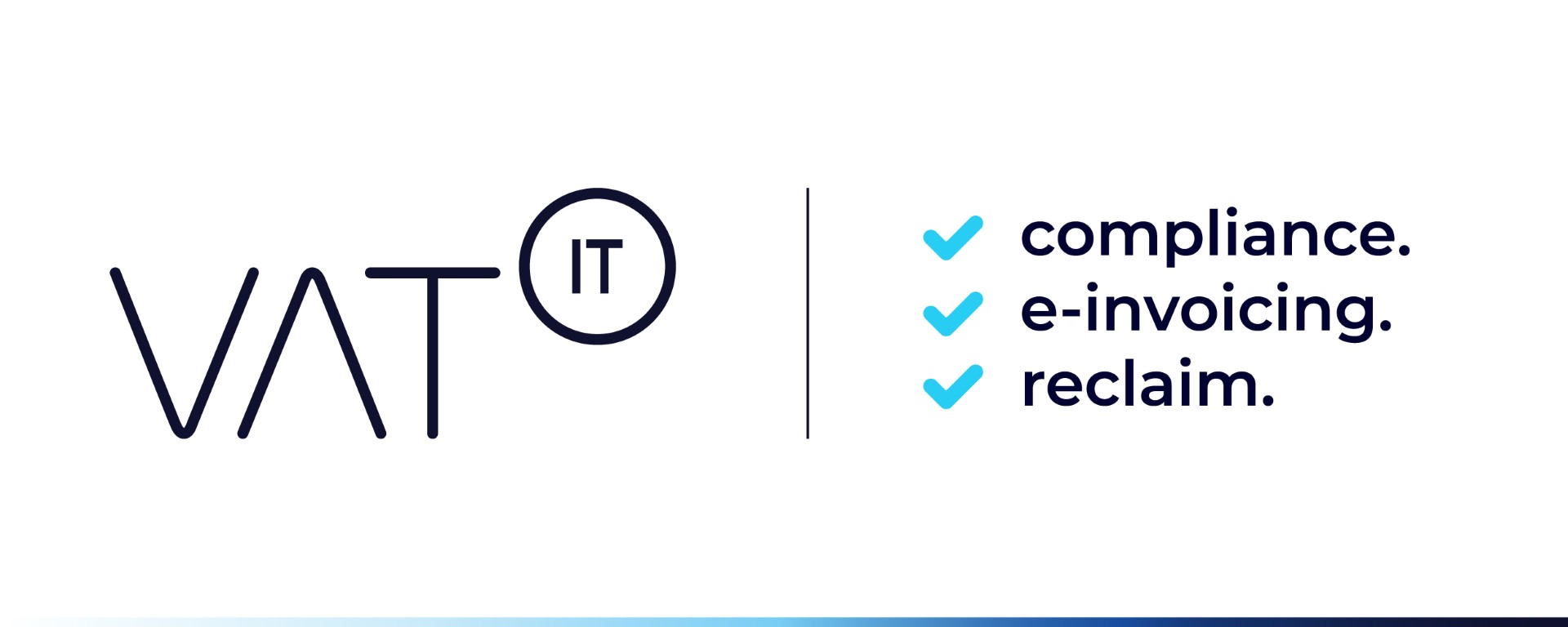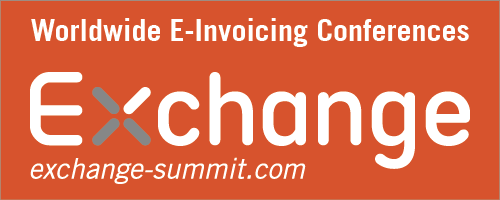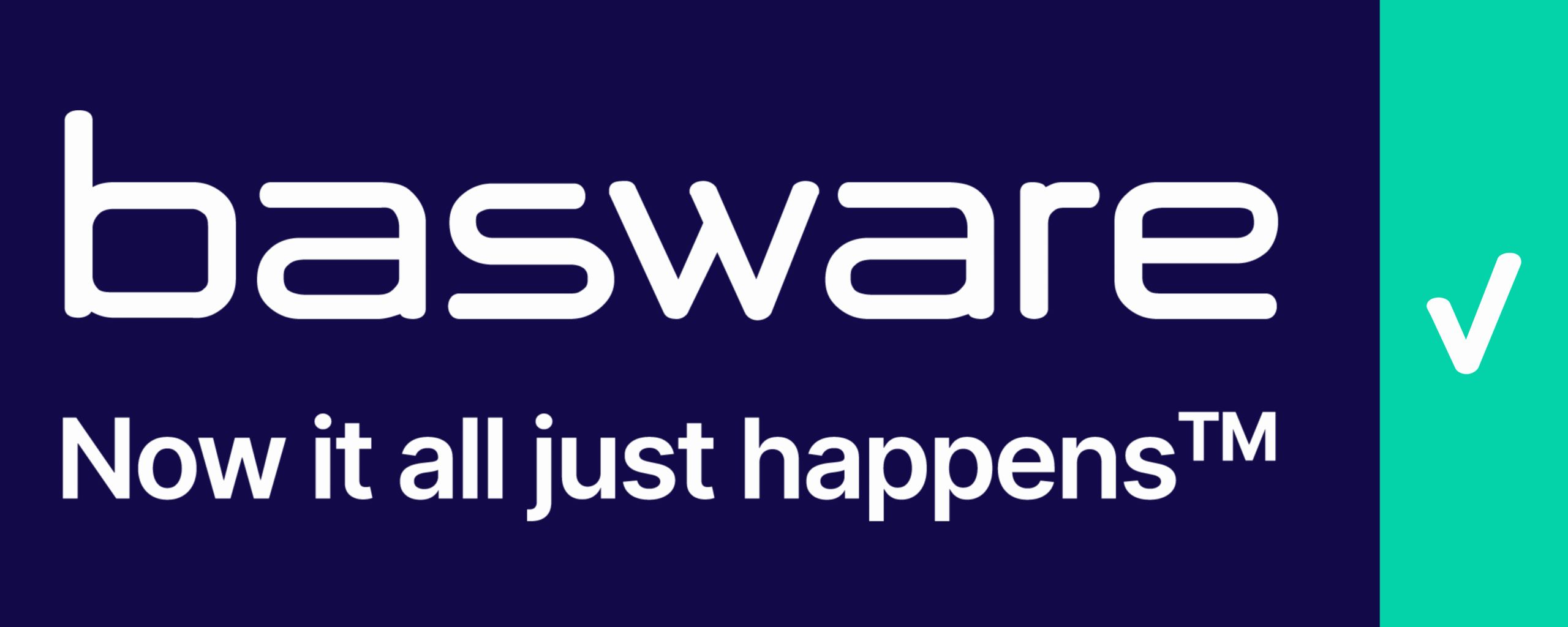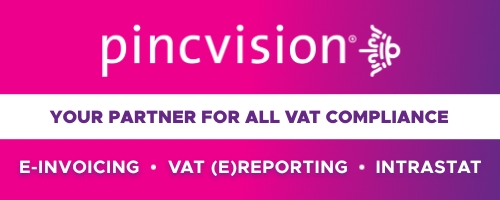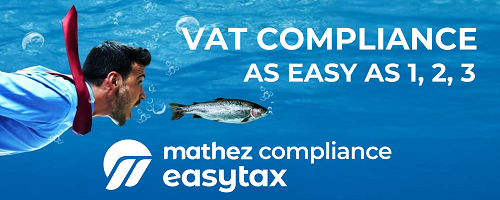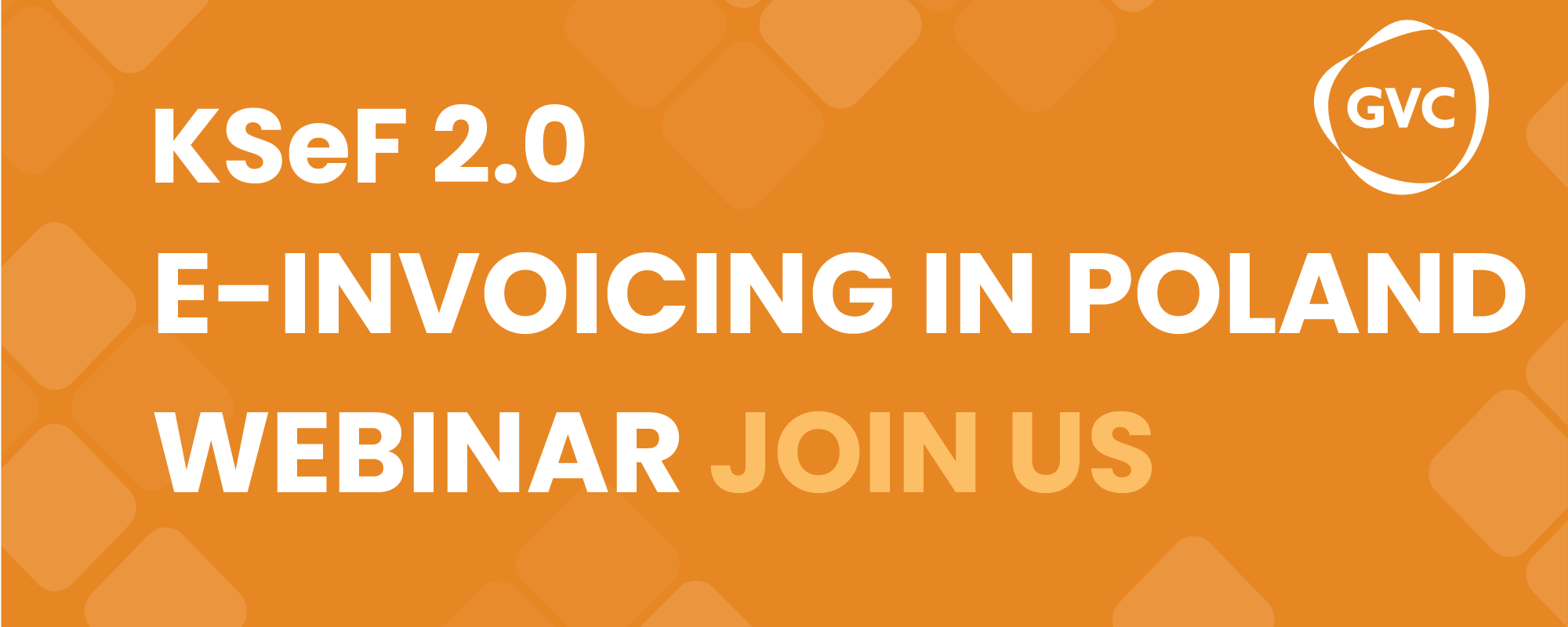Link to VAT Law in Slovakian: 222/2024
See also
Slovak VAT Law: Comprehensive Briefing Document
I. Introduction to Slovak VAT
Slovak Value Added Tax (VAT) is governed by Act No. 222/2004 Coll. The law defines the core transactions subject to VAT, identifies who is considered a “taxable person,” and outlines the conditions for VAT registration and various exemptions and special schemes.
II. Core Concepts of Slovak VAT
A. Subject of Tax (§ 2)
Slovak VAT applies to four main categories of transactions for consideration within Slovakia, carried out by a taxable person acting as such:
- Supply of goods.
- Supply of services.
- Acquisition of goods from another EU member state.
- Import of goods into Slovakia.
The “domestic territory” (“tuzemsko”) is defined as the territory of the Slovak Republic. Notably, Monaco is treated as part of France, and the Isle of Man as part of the United Kingdom for VAT purposes. “EU territory” (“územie Európskej únie”) includes Slovakia and other member states’ domestic territories, while “third country territory” (“územie tretích štátov”) refers to areas outside the EU.
B. Taxable Person (§ 3)
A “taxable person” (“zdaniteľná osoba”) is “any person who independently carries out any economic activity, regardless of the purpose or results of this activity.”
- Economic Activity (“Podnikanie”): This broadly includes “any activity generating income, including manufacturing, trade, service provision (e.g., mining, construction, agriculture, liberal professions), intellectual creative work, and sports activities.” It also covers the use of tangible or intangible assets to generate income.
- Exclusions: Activities performed “on the basis of an employment relationship, state employment relationship, service relationship, or other similar relationship, where a natural person is obliged to follow instructions or orders, thereby creating a state of subordination and superiority in terms of the conditions of the activity performed and its remuneration,” are not considered independent economic activity.
- Public Authorities: State bodies and public authorities are generally not considered taxable persons when acting within their main activity, even if they receive payments. Exceptions apply if their activity “significantly distorts or could significantly distort competition,” or if they perform certain specified activities (listed in Annex 8 of the law) to a “non-negligible extent.”
- Occasional Supply of New Means of Transport: Any person “who occasionally supplies a new means of transport…from the domestic territory to another Member State and this new means of transport is dispatched or transported by that person or the purchaser or on their behalf to the purchaser, is a taxable person for this purpose.”
C. Taxpayer and Registration Obligation (§ 4, § 5, § 5a)
1. Domestic Taxpayer (“Platiteľ”) (§ 4)
A domestic taxable person becomes a “platiteľ” (VAT payer) under various conditions:
-
- Turnover Thresholds:If the value of supplied goods and services (excluding VAT) “exceeded 50,000 EUR in the preceding calendar year,” registration is triggered on January 1st of the following year.
- If this value “exceeds 62,500 EUR in the current calendar year,” registration is triggered on the day the threshold is surpassed.
- Other Triggers: Legal succession of an existing VAT payer, acquisition of a business from a payer, split-offs where assets of a payer are transferred, or specific supplies of construction (buildings, parts of buildings, or building plots) exceeding the turnover threshold.
- Deadlines: A registration application must be submitted to the tax office within five working days “from the day the obligation to register arises.”
- Voluntary Registration: A taxable person can voluntarily register before reaching the turnover thresholds.
- VAT ID Validity: The VAT identification number becomes valid either on January 1st of the year following the 50,000 EUR threshold, on the day the 62,500 EUR threshold is exceeded, or on the day specific triggering events (like legal succession) occur.
- Bank Account Notification (§ 6): VAT payers must “immediately” notify the Financial Directorate of all business bank accounts used for taxable activities and any changes to these accounts. Failure to do so can result in a fine of up to 10,000 EUR. If a payer uses an account belonging to another person, that person can be held jointly and severally liable for unpaid VAT.
2. Foreign Person as Taxpayer (§ 5)
A foreign person becomes a VAT payer in Slovakia upon the supply or acquisition of taxable goods or services in Slovakia, or the receipt of an advance payment for such.
- Exemptions: Foreign persons are exempt from becoming a VAT payer if they supply only:
- Certain transport and related services (e.g., those related to exports).
- Services or goods where the reverse charge mechanism applies (recipient is liable for VAT, § 69(2) to (4)).
- Goods where the recipient is liable for tax (e.g., gas, electricity to a taxable person, § 69(9)).
- Goods imported from a third country and subsequently supplied to another EU member state, if represented by a tax representative.
- Goods within a triangular trade as the first recipient.
- Goods or services subject to special OSS/IOSS schemes.
- VAT-exempt goods or services (e.g., healthcare, financial services).
- Goods or services exempt under customs warehousing schemes.
- Goods or services supplied by small foreign businesses benefiting from an exemption.
- Registration Process: Foreign persons must apply for registration to the Bratislava Tax Office within five working days of the obligation arising. The VAT ID becomes valid on the day they become a payer.
- Change of Status (§ 6a): Rules exist for transitioning between domestic and foreign payer status if circumstances (e.g., establishment of a permanent presence) change.
3. Group Registration (§ 4a, § 4b)
Multiple taxable persons can form a VAT group, treated as a single taxable person.
- Conditions: Members must be “financially, economically, and organisationally connected.”
- Financial link: One or more persons are controlled by a controlling person.
- Economic link: Main activities are interdependent, share a common economic objective, or one performs activities for other group members.
- Organisational link: Share common management or control by at least one common person.
- Exclusions: Entities undergoing bankruptcy or restructuring cannot be group members. A taxable person can only be part of one group. Non-Slovak branches of a group member cannot be part of the Slovak VAT group.
- Application Process: Application is submitted to the tax office of the group representative. Registration usually takes effect on January 1st of the year following the application (or the second following year if applied after October 31st).
- Group Representative: Acts on behalf of the group.
- Joint and Several Liability: All group members are “jointly and severally liable for the obligations of the group.”
- Adding/Leaving a Group: Processes exist for changes in group membership.
D. Registration Obligation for Non-Taxpayers (§ 7, § 7a)
Even non-VAT payers (or legal persons not taxable persons) may have registration obligations:
- Acquisition of Goods from Other EU Member States (§ 7): Registration is required before the total value of goods acquired from other EU member states (excluding new means of transport and excisable goods) reaches 14,000 EUR in a calendar year. Voluntary registration below this threshold is possible.
- Receipt/Supply of Services to/from Other EU Member States (§ 7a): Registration is required for non-payers (not registered under §4) who:
- Receive services from a foreign person in another EU member state where the recipient is liable for tax (reverse charge, § 69(3)).
- Supply services with a place of supply in another EU member state to a taxable person (where the recipient is liable for tax, § 15(1)).
III. Taxable Transactions and Place of Supply
A. Supply of Goods (§ 8, § 8a, § 9a)
- Definition: “Supply of goods” is generally defined as “the transfer of the right to dispose of tangible property as owner.” This includes movable and immovable property, and intangible items like electricity, gas, water, and heat.
- Special Cases:Transfer of ownership by state authority/law (e.g., expropriation).
- “Personal consumption/free supply of goods with input tax deduction”: If input tax was deducted, using goods for personal consumption or free supply for non-business purposes is considered a supply for consideration (with exceptions for low-value business gifts and samples).
- Movement of own goods within EU: Transferring goods owned by a taxable person from Slovakia to another EU member state for business purposes is generally considered a supply, unless it falls under specific exceptions (e.g., installation, distance selling, temporary use, call-off stock).
- Commission agreements: A person acting in their own name on behalf of another person (commissioner) for the purchase or sale of goods is deemed to have bought and sold the goods themselves.
- Facilitating supply via electronic interfaces (§ 8(7)): Marketplaces or similar electronic platforms facilitating the supply of goods by non-EU established taxable persons to non-taxable persons in the EU, or distance sales of imported goods (up to 150 EUR), are deemed to have received and supplied the goods themselves.
- Call-Off Stock Arrangement (§ 8a): Specific conditions apply, including the supplier not being established in the destination EU country and the recipient being identified for VAT there. If conditions are met and ownership transfers within 12 months, it’s treated as an exempt intra-Community supply. If not, the movement of goods becomes a taxable transaction.
- Vouchers (§ 9a):Single-purpose voucher: “where the place of supply and the VAT due for the goods or services… are known at the time of its issue.” The transfer of such a voucher by a taxable person acting in their own name is considered a supply of the underlying goods or services.
- Multi-purpose voucher: “any voucher that is not a single-purpose voucher.” For these, “only the actual supply of goods or services for which the voucher is redeemed is subject to VAT.”
B. Supply of Services (§ 9, § 9a)
- Definition: “Supply of services” is “every performance which is not a supply of goods.” Examples include transfer of rights to intangible property (patents, licenses), granting the right to use tangible property, and accepting an obligation to refrain from an act.
- Special Cases: Personal use of assets by taxpayer/employees: If input tax was deducted, the use of business assets for personal consumption or non-business purposes is considered a supply of services for consideration.
- Free supply of services for personal use/non-business purposes: Generally considered a supply for consideration if input tax was deducted.
- Commission agreements: Similar to goods, a person acting in their own name on behalf of another person for the procurement of services is deemed to have received and supplied the services themselves.
C. Transactions Not Considered Supply (§ 10)
Certain transactions are explicitly not considered a supply of goods or services:
- Sale/contribution of a business or part of a business if the acquirer is a VAT payer or becomes one (with exceptions for predominant exempt activities).
- Transfer of assets in a split-off.
- Specific financial transactions: Issuance of securities, assignment of receivables, bank interest (if the payer is not a bank).
D. Acquisition of Goods from Other EU Member States (§ 11, § 11a)
- Definition: “Acquisition of goods in Slovakia from another EU member state” is the “acquisition of the right to dispose of movable tangible property from another EU member state, where the goods are dispatched or transported to the acquirer in Slovakia by the supplier or acquirer or on their behalf.”
- Taxable Acquisition: Generally subject to tax if the acquirer is a taxable person (or legal person not a taxable person) acting as such, and the supplier is a taxable person identified for VAT in another EU member state.
- New Means of Transport: Acquisition of new means of transport is always taxable, regardless of the status of the buyer or seller. “New means of transport” has detailed criteria for vehicles (e.g., less than 6,000 km or 6 months old), vessels (e.g., less than 100 hours or 3 months old), and aircraft (e.g., less than 40 hours or 3 months old).
- Exemptions: Specific scenarios where acquisition is not subject to tax (e.g., if a domestic supply of such goods would be exempt, certain low-value goods for non-taxable persons below a 14,000 EUR threshold, or goods for privileged persons like diplomatic missions).
- Option to Tax Low-Value Acquisitions: Non-taxable persons (or legal persons not taxable persons) can opt to tax acquisitions below the 14,000 EUR threshold for at least two years.
- Self-Supply/Transfer of Own Goods: Movement of own goods into Slovakia from another EU member state for business purposes is considered an acquisition.
- Supply to Armed Forces/NATO/EU: Specific exemptions apply for goods supplied to NATO/PFP forces and EU common security forces.
- Call-Off Stock (Acquisition) (§ 11a): If goods are dispatched from another EU member state under a call-off stock arrangement and ownership transfers within 12 months, the acquisition in Slovakia is deemed to occur when the ownership transfers.
E. Import of Goods (§ 12)
- Definition: “Import of goods” is “the entry of goods from third country territory into the territory of the European Union.”
- Customs Regulations: Customs regulations apply to VAT on imports unless the VAT law provides otherwise.
F. Place of Supply of Goods (§ 13, § 13a, § 14)
- General Rules (§ 13):Goods with dispatch/transport: Where dispatch/transport begins.
- Goods with installation/assembly: “the place where the goods are installed or assembled.” This overrides the general dispatch rule.
- Goods without dispatch/transport: Where the goods are located when supplied.
- Goods on board aircraft, vessels, trains (passenger transport): Where the passenger transport begins within the EU.
- Gas, electricity, heat, and cold:To traders: Where the trader has their seat, place of business, or permanent establishment. A “trader” is a taxable person whose main activity regarding these goods is resale, and their own consumption is negligible.
- To non-traders: Where the customer actually uses and consumes the goods. If not fully consumed, the place of supply is deemed to be where the customer has their seat, place of business, or permanent establishment.
- Goods from Third Countries (§ 13(2)): If dispatch begins in a third country, the place of supply by the importer, and any subsequent supplies, is the EU member state of import.
- Chain Transactions (§ 13a): When the same goods are subject to consecutive supplies and dispatched/transported from one EU member state to another directly from the first supplier to the final customer, the transport is generally attributed to the supply made to the intermediate person. If the intermediate person provides their VAT ID from the dispatching member state, the transport is attributed to the supply by the intermediate person.
- Distance Selling (§ 14):Definition: Distance selling involves goods dispatched/transported by the supplier (or on their behalf) to a customer in another EU member state (for intra-EU sales) or from a third country to an EU customer (for imported goods), where the customer is generally a non-taxable person (or a legal person not a taxable person where intra-Community acquisition is not subject to tax). It excludes new means of transport and goods with installation/assembly.
- General rules for place of supply:Intra-EU distance selling: Where the dispatch/transport ends, unless the small business threshold (§ 16a) applies.
- Distance selling of imported goods (to another MS): Where the dispatch/transport ends.
- Distance selling of imported goods (to MS of import): In the MS of import if the IOSS special scheme (§ 68c) is used.
- Facilitating supply via electronic interfaces (§ 14(6)): For goods supplied through electronic interfaces (§ 8(7)), the dispatch/transport is attributed to the supply made by the electronic interface operator.
G. Place of Supply of Services (§ 15, § 16, § 16a)
- General Rules (§ 15):Services to a taxable person (B2B): Where the recipient has their seat or place of business. If supplied to a permanent establishment, then at the location of that establishment. If no such place, then their habitual residence.
- Services to a non-taxable person (B2C): Where the supplier has their seat or place of business. If supplied from a permanent establishment, then at the location of that establishment. If no such place, then their habitual residence.
- Special Rules (Exceptions to General Rules) (§ 16):Immovable property services: Where the immovable property is located.
- Lease of means of transport:Short-term: Where the means of transport is physically put at the customer’s disposal. “Short-term” is defined as continuous possession/use for up to 30 days (or 90 days for vessels).
- Other leases (B2C): Where the recipient has their seat, habitual residence (with exception for pleasure boats).
- Cultural, artistic, sports, scientific, educational, entertainment, and similar services (B2C):Physical presence: Where the services are physically performed.
- Virtual access: Where the non-taxable recipient has their seat, habitual residence.
- B2B for events: Where the event actually takes place (unless virtual participation).
- Passenger transport: Where the transport is physically performed, proportionally to the distances covered in each state.
- Goods transport (B2C):Intra-EU goods transport: Where the transport begins.
- Other goods transport: Where the transport is physically performed, proportionally.
- Ancillary transport services (B2C): Where physically performed (e.g., loading, unloading).
- Valuation of tangible movable property and work on tangible movable property (B2C): Where physically performed.
- Restaurant and catering services:General: Where physically provided.
- On-board (ships, aircraft, trains, for EU passenger transport): Where the passenger transport begins.
- Intermediation services (B2C): The same place as the underlying supply or acquisition being intermediated.
- Telecommunication, radio/TV broadcasting, and electronic services (B2C): Where the non-taxable recipient has their seat, habitual residence, unless the small business threshold (§ 16a) applies.
- Electronic services: Examples include website hosting, software supply, digital content, online education.
- Telecommunication services: Transmission, broadcasting, receiving signals/information.
- Services to non-EU non-taxable persons (§ 16(15), (16)): A specific list of services (e.g., intellectual property transfers, advertising, consulting, financial services, staff provision, tangible movable property rental (non-transport), access/distribution services for gas/electricity) supplied to non-EU non-taxable persons are deemed to be supplied where the recipient has their seat or habitual residence.
- Small Businesses and Distance Selling/Electronic Services (§ 16a):Threshold: If a supplier is established in only one EU member state and their total value of intra-EU distance sales and B2C telecommunication, broadcasting, and electronic services to other EU member states does not exceed 10,000 EUR in the current and preceding calendar year, the place of supply remains the supplier’s location.
- Option to Apply General Rules: Suppliers can opt to apply the general rules (place of consumption) even below the threshold for at least two calendar years.
H. Place of Acquisition of Goods from Other EU Member States (§ 17)
- General rule: Where the goods are located at the end of their dispatch or transport to the acquirer.
- Special rule for acquisition under different VAT ID: If an acquirer uses a VAT ID from an EU member state different from where the transport ends, the place of acquisition is deemed to be the member state that issued that VAT ID, unless the acquirer can prove it was taxed in the actual destination member state.
- Triangular Trade (§ 45): For triangular trade, the place of acquisition for the first recipient is the member state where the transport ends, provided specific conditions are met (e.g., the first recipient proves acquisition for subsequent supply, the second recipient is liable for tax in the destination MS, and the first recipient declares it in their recapitulative statement).
I. Place of Import of Goods (§ 18)
- General rule: Where the goods are located when they enter the EU territory.
- Special rules for goods under customs procedures: If goods are placed under certain customs procedures (e.g., temporary storage, customs warehousing, inward processing, temporary admission, external transit), the place of import is the member state where these customs measures end.
IV. Tax Liability and Rates
A. Tax Liability (When Tax Arises) (§ 19, § 20, § 21)
- Supply of Goods and Services (§ 19):General rule: “Tax liability arises on the day of supply of goods” or “on the day of supply of services.” The day of supply for goods is typically when the buyer gains the right to dispose of them as owner. For real estate, it’s the day of handover if earlier than land registry entry. For works contracts, it’s the day of handover. For hire-purchase, it’s the day of handover to the lessee.
- Partial/Repeated Supplies: For partial or repeated supplies, tax liability arises “at the latest on the last day of the period to which the payment… relates.” Specific rules apply for contracts over 12 months, utility services, electronic communication services, and intra-Community supplies.
- Advance payments: “If payment is received before the supply of goods or services, tax liability for the received payment arises on the day of receipt of payment.”
- Commission agreements: For goods, the tax liability for the principal (komitent) arises on the same day as for the commissioner. For services, it generally arises on the day the invoice is issued by the procurer (or by the end of the third calendar month if no invoice).
- Vending machines: Tax liability arises when money is collected or turnover determined.
- Intra-Community supplies (EU exports) (§ 19(8)): The 15th day of the month following the supply, or the invoice date if earlier.
- Export to third countries (§ 19(9)): The day of the goods’ exit from the EU, confirmed by customs.
- Returnable packaging (§ 19(10)): Annual calculation based on the difference between packaging put on the market and returned.
- Supplies facilitated by electronic interfaces (§ 19(11)): Tax liability arises on the day payment is received.
- Acquisition of Goods from Other EU Member States (§ 20):General rule: The 15th day of the calendar month following the acquisition, or the invoice date if earlier.
- New means of transport (non-registered persons): On the day of acquisition.
- Import of Goods (§ 21):When goods are released for free circulation (including final use), released into temporary admission with partial import duty exemption, or whenever a customs debt arises.
- Tax liability generally arises on the day the customs declaration is accepted or the customs debt arises.
B. Tax Base and Tax Rates (§ 22, § 23, § 24, § 26, § 27)
- Tax Base for Goods and Services (§ 22): “everything that constitutes the consideration that the supplier has received or is to receive from the recipient… or another person for the supply… reduced by tax.”
- Included: Subsidies linked to the price, other taxes/duties, ancillary costs (commission, packaging, transport, insurance).
- Excluded: Transient items (expenses paid in the name and on behalf of the buyer/customer), deposits for returnable packaging, discounts (if granted at time of supply or for early payment).
- Personal Use/Free Supply: For personal use or free supply with input tax deduction, the tax base is the purchase price or cost of creation; for services, it’s the cost of the service.
- Related Parties: If consideration is lower than market value and the recipient is not a full input tax deductibility payer, the tax base is the market value.
- Vouchers: For multi-purpose vouchers, the tax base is the consideration paid for the voucher (minus tax) or its monetary value if consideration is unknown.
- Tax Base for Intra-Community Acquisitions (§ 23): Determined similarly to goods and services, including ancillary costs.
- Tax Base for Imports (§ 24): The customs value of the goods.
- Included (if not in customs value): Other taxes/duties, ancillary costs (commission, packaging, transport, insurance) incurred up to the first destination in Slovakia (or other EU destination if known at import).
- Excluded: Price discounts.
- Currency Conversion (§ 26): Foreign currency is converted to EUR using the European Central Bank (ECB) or National Bank of Slovakia (NBS) reference exchange rate from the day preceding the tax liability (or customs rates if opted for).
- Rounding (§ 26): Calculated VAT is rounded to the nearest eurocent (0.005 EUR rounded up).
- Tax Rates (§ 27):Standard rate: 23% (Note: the source specifies 19% in the Quiz Answer Key but 23% in §27; 20% is the current standard rate in Slovakia as of current law. This briefing uses the source’s stated rates).
- Reduced rate: 19% (for specific goods/services listed in Annex 7 point 1 and Annex 7a point 1).
- Super-reduced rate: 5% (for specific goods/services listed in Annex 7 points 2 and 3, Annex 7a point 2, and supplies by registered social enterprises, or qualifying state-supported rental housing construction/renovation).
C. Correction of Tax Base (§ 25, § 25a)
- General Corrections (§ 25): The tax base is corrected for full/partial cancellation of supply, return of goods, or price changes (increase/decrease) after tax liability arose. The difference is reported in the tax return for the period when the correction document is issued or when the event occurs (if no document). The original tax rate applies.
- Corrections for Unpaid Consideration (§ 25a): A supplier (who is liable for VAT) may reduce the tax base if the consideration for goods/services becomes uncollectible.
- Conditions for uncollectibility: Vary based on debt value and legal actions taken (e.g., 150 days past due for small debts with collection efforts, court action/enforcement for larger debts), or specific insolvency/liquidation events (bankruptcy, debt relief, dissolution without successor, debtor’s death).
- Exclusions: Corrections are not allowed for related parties, or if the supplier knew/should have known of non-payment at the time of supply.
- Time Limits: The right to correct generally expires three years after the last day for filing the tax return for the period of supply.
- Reversal: If payment is later received, the tax base must be re-corrected upwards.
- Correctional Documents: Generally required for B2B transactions.
V. Tax Exemptions
Slovak VAT law distinguishes between two types of exemptions:
A. Exemptions without Right to Deduct Input Tax (§ 28 – § 42)
These are generally public interest or financial services, where the supplier cannot deduct input tax related to these supplies.
- Postal services (§ 28): Universal postal services and related goods.
- Healthcare (§ 29): Services by state and non-state healthcare facilities, related goods/services (excluding medicines/medical devices). Includes nursing, midwifery, spa care, dental services, and ambulance services. Also, human organs, blood, and breast milk.
- Social assistance services (§ 30): Services in social service facilities and related goods, also by non-profit organizations meeting specific criteria (non-profit, voluntary, price controls).
- Education and training services (§ 31): Services provided under specific regulations, by non-profit organizations (similar criteria to social assistance), and vocational training/retraining. Related goods/services are also exempt.
- Services to members (§ 32): Services provided for membership fees to political parties, churches, trade unions, professional chambers, etc., if it doesn’t distort competition. Also, services by legal persons to members performing exempt or non-taxable activities, if directly necessary and only common expenses are charged.
- Sports and physical education-related services (§ 33): Provided by non-profit organizations (similar criteria to social assistance).
- Cultural services (§ 34): Provided by state-established entities or non-profit organizations.
- Fundraising events (§ 35): Supplies of goods/services by organizations exempt under § 29-34 for fundraising for their own activities, if it doesn’t distort competition.
- Public service broadcasting (§ 36): Exempt, excluding advertising, teleshopping, and sponsored programs.
- Insurance services (§ 37): Insurance and reinsurance activities, including intermediation. Also, Social Insurance Agency and health insurance companies.
- Supply and lease of immovable property (§ 38):Supply of buildings/parts/building plots: Exempt after five years from first use, first occupancy permit, or substantial reconstruction permit (where costs are at least 40% of pre-work value).
- Supply of land: Exempt, except for building plots.
- Lease of immovable property: Generally exempt, except for accommodation services, parking spaces, permanently installed equipment/machinery, and safety deposit boxes.
- Option to Tax: A payer can opt to tax the lease of immovable property to another taxable person (except for residential property: apartments, family houses, rental apartments, or apartment-house apartments). Similarly, a payer can opt to tax the supply of buildings/parts after the five-year period (except for residential buildings/apartments/rental apartments).
- Financial services (§ 39): Credit, loans, guarantees, deposits, payments, securities, money as legal tender, currency exchange, fund management, and certain derivatives.
- Sale of postage stamps and revenue stamps (§ 40): If sold at nominal value, and their intermediation.
- Lotteries and other similar games (§ 41): Operated by authorized persons, and related activities (e.g., accepting bets).
- Supply of goods where input tax was not deducted (§ 42): Goods used exclusively for activities exempt under § 28-41 with no input tax deduction, or goods for which no input tax deduction was possible under § 49(7) (e.g., hospitality).
- Supply of goods to a taxable person facilitating supply (§ 42a): The supply of goods to an electronic interface operator (marketplace) that is deemed to have received and supplied the goods under § 8(7) is exempt.
B. Exemptions with Right to Deduct Input Tax (§ 43 – § 48e)
These are typically international transactions, where input tax can still be deducted.
- Intra-Community Supply of Goods (§ 43): Exempt if goods are dispatched/transported from Slovakia to another EU member state, the recipient is a taxable person identified for VAT in that other member state and has provided their VAT ID to the supplier, and proof of dispatch/transport exists (e.g., invoice copy, transport document, confirmation of receipt). Special rules apply for new means of transport and excisable goods.
- Intra-Community Acquisition of Goods (§ 44): Exempt if the domestic supply or import of such goods would be exempt, or if the acquirer would have full refund rights.
- Triangular Trade (§ 45): A simplified scheme for three parties in three different member states involving a single transport of goods. The first recipient is exempt from VAT on their acquisition, and the second recipient is liable for tax in their member state. Specific conditions apply to VAT identification and reporting.
- Transport Services (§ 46): Exemptions for transport to/from Azores/Madeira, and international passenger transport (from/to/through Slovakia, or domestic legs of international air/water transport). Related baggage/vehicle transport is also exempt.
- Export of Goods and Services (§ 47):Goods to third countries: Exempt if dispatched/transported by the seller or buyer (if non-established in Slovakia) to a third country destination. Proof of export (customs declaration, transport document) is required.
- Goods in duty-free zones/aircraft: Sales in transit zones of international airports/ports, or on board aircraft, to individuals leaving the EU.
- Processing operations on movable property for export: Exempt if the property was imported for such operations and is re-exported.
- Services directly related to export: Exempt, including transport and ancillary services for goods under customs procedures.
- Supply of goods for provisioning vessels/aircraft: Exempt for certain types of vessels (sea-going, rescue, naval) and aircraft used by international air carriers.
- Supply of gold to central banks: Exempt.
- Intermediation of exempt supplies: Intermediation of supplies exempt under § 47(1)-(11) is also exempt.
- Free supply of goods for humanitarian aid (§ 47(13)): Exempt if supplied as a gift to the Slovak Ministry of Interior for export as humanitarian/charitable aid.
- Import of Goods (§ 48, § 48a, § 48b):General exemption: If the domestic supply of such goods would be exempt.
- Goods exempt from customs duty: Many categories are exempt from VAT on import if they are also exempt from customs duty (e.g., small consignments up to 45 EUR, personal property moved, gifts, samples, promotional materials, goods for testing, temporary use, certain agricultural products, items for charities, diplomatic goods, fuel in vehicle tanks).
- Import for subsequent Intra-Community supply (§ 48(3)): Exempt if the imported goods are immediately followed by an exempt intra-Community supply. Security may be required (§ 48b).
- Re-import of goods: Exempt if re-imported in the same state by the exporter and exempt from customs duty.
- Services related to imports: Exempt if their value is included in the import tax base.
- Import of gas, electricity, heat, and cold: Exempt.
- Low-value consignments from third countries (§ 48(10)): Exempt if the value does not exceed 150 EUR and VAT is declared under the IOSS scheme (§ 68c).
- Goods for EU/international bodies (§ 48(5), (11), (13)): Exempt for EU institutions, international organizations, and armed forces participating in common defense efforts.
- Import in Passenger Baggage (§ 48a): Non-commercial imports by travelers are exempt up to certain value limits (e.g., 300 EUR generally, 430 EUR for air travelers). Specific quantitative limits apply to tobacco products (e.g., 200 cigarettes for air travelers, 40 for others) and alcohol (e.g., 1L over 22% vol. or 2L up to 22% vol. + 4L wine + 16L beer), with age restrictions. Fuel in standard tanks + 10L portable.
- Security for Import Tax (§ 48b): Customs authorities may require security for exempt imports destined for subsequent intra-Community supply. Security is released upon proof of onward supply. If not provided within 60 days, exemption is cancelled and tax levied.
- Customs Warehouse and Special Warehouse (§ 48c, § 48ca, § 48d, § 48e):Exemptions: Supply/acquisition/import of certain goods (Annex 9) and related services (storage, valuation, physical work) within customs warehouses or special warehouses are exempt.
- Special Warehouse (§ 48d): Defined as a spatially confined place for specific goods with storage capacity of at least 50 million litres, requiring stationary tanks with certified meters. An operating permit from the tax office is needed, requiring conditions like being a registered payer, no tax arrears over 1,000 EUR, and depositing a tax security based on storage capacity and average goods price.
- Tax Liability on Withdrawal: When goods are removed from these warehouses, the exemption ceases, and the person causing the removal becomes liable for the VAT. The operator has record-keeping obligations and is jointly and severally liable for unpaid tax if they allow removal without fulfilling obligations.
- Tax Warehouse (§ 48e): Exemptions for imports, supplies, acquisitions, and services related to excisable goods placed in a tax warehouse, subject to security requirements and specific reporting.
VI. Input Tax Deduction and Adjustment
A. Input Tax Deduction by Taxpayer (§ 49, § 49a, § 51)
- Right to Deduct (§ 49(1)): A VAT payer has the right to deduct input tax on goods and services used for their taxable supplies. The right arises on the day the tax liability for the input supply occurs.
- Conditions for Deduction (§ 51): Requires proper documentation (e.g., invoice from a Slovak payer, self-assessed VAT for reverse charge/intra-Community acquisitions, import document for imports). Deduction is allowed “at the earliest in the taxable period in which the right to deduct arose, and at the latest in the last taxable period of the calendar year in which the right to deduct arose,” provided the documentation is obtained by the deadline for filing the tax return for that period.
- Exclusions from Deduction (§ 49(3), (7)):Supplies exempt without right to deduct: No input tax deduction for goods/services used for activities exempt under § 28-42 (e.g., healthcare, financial services, immovable property leases), except for insurance/financial services supplied to non-EU customers or directly related to export.
- Investment gold: Generally no deduction for investment gold supplies exempt under § 67(3), with specific exceptions for manufacturers/converters and related services.
- Hospitality and entertainment (“pohostenie a zábava”): No input tax deduction on these.
- Transient items (“prechodné položky”): Expenses paid in the name and on behalf of the customer, which the supplier then recharges, are not part of the tax base and thus no input tax is deducted.
- Mixed Use of Goods/Services (§ 49(4)): If goods/services are used for both taxable and exempt supplies, the payer must deduct input tax proportionally using a pro-rata coefficient (§ 50).
- Mixed Use of Investment Assets (§ 49(5), § 49a): For investment assets used for both business and non-business purposes, the payer can choose not to deduct the part of the tax corresponding to non-business use. If they do so, the non-business use is not considered a supply for consideration. Otherwise, tax is deducted proportionally to business use. For buildings and construction, the proportion is often based on area.
- Business Activities Abroad (§ 49(6)): Input tax can be deducted for goods/services used for business activities abroad if they would be deductible if carried out in Slovakia (exceptions for certain special schemes).
- Taxpayer in Bankruptcy (§ 49(8)): During bankruptcy proceedings, input tax can only be deducted for goods/services used for operating the business, not for maintaining bankruptcy estate.
- Foreign Persons and Input Tax Deduction (§ 49(9), (10)): Foreign persons who qualify for VAT refunds via special schemes (§ 55a, § 56) generally cannot deduct input tax through a VAT return, unless it relates to supplies where they are the liable person (reverse charge).
B. Pro-Rata Input Tax Deduction (§ 50)
- Calculation of Coefficient: Calculated annually as a fraction: (Value of taxable supplies) / (Value of all supplies).
- Excluded from both numerator and denominator: Sale of a business or part, sale of assets used for business (not stock), occasional financial services, occasional real estate transfers/leases.
- Application of Coefficient: An estimated coefficient (from the previous year, or a new estimate with tax authority consent) is used during the year. A final coefficient is calculated at year-end, and the difference is adjusted in the last taxable period of the calendar year.
C. Input Tax Deduction for New Means of Transport (§ 52)
Occasional suppliers of new means of transport (who are taxable persons for this specific purpose) can deduct input tax on the acquisition of the new means of transport, but only up to the amount of VAT that would be payable on its supply. This deduction must be claimed in the month of supply.
D. Correction and Adjustment of Deducted Tax (§ 52a, § 53, § 53a, § 53b, § 54, § 54a, § 54b, § 54c, § 54d)
- Definitions (§ 52a):“Prvotné použitie” (initial use): First actual use of goods/services for supplies where input tax deduction rights arose.
- “Dlhodobý majetok” (long-term assets): Assets used for business for more than one year, not for resale.
- Adjustment Period (§ 52a):5 calendar years: For movable investment assets (cost > 1,700 EUR) and intangible assets (cost > 2,400 EUR).
- 20 calendar years: For buildings, building plots, apartments, non-residential premises, and major construction works (additions, alterations > 40% of value).
- Correction of Deducted Tax (§ 53, § 53a): Required/permitted when:
- Changes in tax base (§ 53(1)(a),(b)): If the original tax base decreases (e.g., discount, return), input tax must be corrected downwards. If it increases, input tax can be corrected upwards.
- Initial deduction error/change in initial use (§ 53(1)(c)): Correction required if the initial deduction was too high based on actual first use, or allowed if too low.
- Theft (§ 53(5)): If goods for which input tax was deducted are stolen, the payer must remit the deducted tax (up to the amount deducted). If the goods are recovered, a re-correction is allowed.
- Services on investment assets without initial deduction (§ 53a): If services permanently increase the value of an investment asset for which no input tax was initially deducted (e.g., it was exempt upon acquisition), and that asset is later supplied for personal use, a correction of input tax on the service is required over the adjustment period (5 or 20 years).
- Correction for Unpaid Consideration (§ 53b): If a payer has not fully paid for goods/services where the supplier was liable for VAT, they must correct their input tax deduction downwards on the 101st day after the payment due date (or upon receiving a correctional document from the supplier in specific insolvency cases). If payment is later made, or the supplier re-corrects their tax base upwards, the input tax can be re-corrected. These corrections must consider pro-rata deductions and adjustments of input tax.
- Adjustment of Deducted Tax for Investment Assets (§ 54, § 54a, § 54d): This applies when the purpose or scope of use of an investment asset changes during its adjustment period, affecting the initial input tax deduction.
- Investment Assets Definition (§ 54(2)): Movable items (>1,700 EUR), buildings, building plots, apartments, non-residential premises, major construction (additions, alterations), and intangible assets (>2,400 EUR).
- Change in Purpose of Use (§ 54): If an asset’s use shifts between taxable, exempt (without deduction right), or mixed (pro-rata) activities. An adjustment is required/permitted if the change in the pro-rata coefficient is greater than 0.10.
- Change in Scope of Use (§ 54a, § 54d): For assets used for both business and non-business purposes, adjustments are made if the proportion of business use changes.
- Impact of Sale of Investment Asset (§ 54(7), § 54a(4), § 54d(4)): If an investment asset is sold during its adjustment period, it is deemed to be used for the remaining period as if it were for fully taxable supplies (if sold with VAT or exempt with deduction right), or for fully exempt supplies (if sold exempt without deduction right).
- Legal Succession and Business Transfer (§ 54b, § 54c): Successors (e.g., in business acquisition or split-off) must continue input tax adjustments for transferred investment assets and must be provided with relevant input tax data by the transferring entity.
E. Input Tax Deduction at Registration (§ 55)
A newly registered payer can deduct input tax on goods and services acquired before registration (e.g., stock, depreciable assets) or for which tax liability arose before registration (e.g., advance payments received by the supplier). For depreciable assets, the deduction is reduced proportionally by accumulated depreciation. Special rules apply for payers who registered late due to non-compliance.
VII. VAT Refunds
A. Refund to Foreign Persons from Other EU Member States (§ 55a – § 55e)
- Conditions for Refund (§ 55a): Non-established in Slovakia, identified for VAT in their own MS, no domestic supplies in Slovakia during the refund period (with specific exceptions for reverse-charge supplies, certain transport services, triangular trade as first recipient), and has a right to deduct input tax in their own MS.
- Exclusions from Refund (§ 55a(5)): No refund for tax incorrectly charged by supplier, or for supplies that should have been exempt as intra-Community supplies or exports. No refund for travel agencies using a margin scheme in their home MS for purchased tourism services.
- Application Process (§ 55b, § 55c): Electronic application via their home MS portal, by September 30th of the following calendar year. Minimum refund amount: 50 EUR (annual) or 400 EUR (quarterly, if >3 months). Requires detailed invoice/import document data. Copies of invoices are required for amounts ≥ 1,000 EUR (or ≥ 250 EUR for fuel).
- Processing by Tax Authority (§ 55d, § 55e): Decision typically within four months, extended if additional information is requested. Refund payment within ten working days of decision. Appeals possible. Penalties for incorrect claims. Interest may be paid for delayed refunds.
B. Refund to Foreign Persons from Third Countries (§ 56 – § 58)
- Conditions for Refund (§ 56): Not established in the EU, identified for tax in their own country (or similar consumption tax), no domestic supplies in Slovakia during the refund period (with specific exceptions for reverse-charge services, certain transport, triangular trade), and would have a right to deduct input tax under Slovak law.
- Exclusions from Refund (§ 56(3)): Similar to EU foreign persons.
- Application Process (§ 57, § 58): Application submitted to the Bratislava Tax Office by June 30th of the following calendar year. Minimum refund amount: 50 EUR (annual) or 1,000 EUR (first half-year) / 50 EUR (second half-year). Requires original invoices/import documents and a certificate from their home tax authority confirming their tax identification.
- Processing by Tax Authority (§ 58): Decision within six months. Refunds within the decision period. Appeals possible. Penalties for incorrect claims, including refusal of future refunds if falsely claimed.
- Reciprocity Principle (§ 58(5)): Refunds may be denied if the third country does not offer similar refunds to Slovak taxpayers.
C. Refund to Travelers upon Export (§ 59, § 60)
- Conditions (§ 59): Non-EU resident (based on passport/document), non-commercial goods in personal luggage, minimum value > 100 EUR (including VAT) per purchase document, export within three months of purchase, and export confirmed by customs in the EU departure member state. Excludes fuel.
- Application Process (§ 59(4), § 60(2)): To the seller, an authorized person by the seller, or a person empowered by the traveler with an agreement with the Financial Directorate.
- Documentation: Purchase document and “tlačivo na vrátenie dane” (refund form) confirmed by customs.
- Seller’s/Authorized Person’s Obligations (§ 60): Issue refund forms, record refunds, and adjust their VAT return for refunded amounts.
D. Refund to Persons with Privileges and Immunities (§ 61, § 62, § 62a, § 62aa, § 63)
- Foreign Representatives (§ 61, § 62): Diplomatic missions, consular posts, international organizations, and their eligible staff.
- Reciprocity Principle (§ 61(3)): Refunds generally based on reciprocity from the foreign state (except for international organizations).
- Annual Limits (§ 61(4)-(12)): Specific annual limits apply for refunds on goods/services (e.g., 99,581.76 EUR for diplomatic missions, 3,319.39 EUR for heads of mission’s personal consumption). Separate limits for cars (e.g., 1-2 per 2 years) and fuel (e.g., 3,200-4,000 liters annually).
- Cars and Fuel (§ 61(6), (8), (12)): Detailed rules for car purchases, destruction/theft, and sale. If a car is sold/gifted within two years, the refunded tax must be returned (unless sold to another foreign representative).
- Application Process (§ 62): To the Bratislava Tax Office quarterly, by the 30th day after quarter end, using a specific form. Requires original invoices/documents (or copies if the home state allows reciprocity). Minimum 33.19 EUR per document.
- EU and International Organizations (§ 62a, § 62aa): EU institutions, ECB, EIB (if Slovakia is host state), and bodies/agencies related to COVID-19 tasks, are entitled to VAT refunds on domestic purchases based on international agreements, unless for onward supply for consideration. Application to Bratislava Tax Office with purchase documents.
- Armed Forces of Other States (§ 63):Exemption for supplies: Goods/services supplied in Slovakia to NATO/PFP forces and EU common security forces for their use or for their catering facilities are exempt. Proof is a specific form confirmed by the Slovak Ministry of Defense.
- Refund to Slovak Ministry of Defense: The Slovak Ministry of Defense can claim a refund for such supplies it makes to foreign armed forces.
E. Refund to Non-Profit Organizations and Slovak Red Cross (§ 64)
Conditions for refund for VAT paid on goods exported outside the EU for humanitarian, charitable, or educational activities. Application to Bratislava Tax Office with purchase documents and customs export declaration.
VIII. Special Tax Schemes
A. Travel Agencies (§ 65)
- Mandatory Special Scheme: Applies to “cestovná kancelária” (travel agency) that buys in travel services from other taxable persons and sells them in its own name to customers.
- No Input Tax Deduction: Travel agencies cannot deduct input tax on these procured tourism services.
- Tax Base: Margin scheme: “the positive difference between the total selling price charged to the customer and the actual costs of the travel agency for tourism services procured from other persons.” This margin is considered the price including VAT. If actual costs are unknown, estimated costs are used.
- Tax Liability: Arises on the day the last service is provided, or on the day payment is received if earlier.
- Pro-Rata Deduction Impact: Procured tourism services are excluded from the calculation of the pro-rata coefficient.
- Exemption: The margin related to services provided outside the EU is exempt. For mixed EU/non-EU services, only the proportional part of the margin relating to non-EU services is exempt.
- Intermediation by Travel Agency: If a travel agency acts in the name and on behalf of another travel agency, it applies normal VAT rules on its commission for intermediation, unless the intermediation itself is exempt (e.g., related to services outside EU).
- Record-Keeping and Invoicing: Detailed records of procured and sold services, and corrections to the tax base, are required. Invoices for margin scheme sales must not separately state the VAT amount.
- Correction of Tax Base: Required/permitted for changes in actual vs. estimated costs or other changes impacting the tax base (reported annually in the last taxable period).
B. Used Goods, Works of Art, Collector’s Items, Antiques (§ 66)
- Definitions: Specific definitions for artworks (Annex 5), collector’s items, antiques (>100 years old), used goods (movable tangible property suitable for further use), and “dealer” (taxable person who buys/acquires/imports for resale, acting in their own name).
- Mandatory Special Scheme: A dealer must apply the margin scheme when selling these goods if they were supplied to them by:
- A non-VAT payer (domestic or from another MS), or a non-taxable person.
- A person identified for VAT where the supply was exempt (under § 42 or equivalent foreign law).
- Another dealer applying a margin scheme.
- Tax Base: Margin scheme: “the positive difference between the selling price and the purchase price reduced by tax.”
- Optional Application: Dealers can optionally apply the margin scheme for imported items (tax base = customs value + import VAT) or items supplied by the artist. If opted for, it must be applied for at least two calendar years.
- Option to Use Normal VAT Scheme: Dealers can choose to apply the normal VAT regime (tax base = full selling price), in which case they can deduct input tax on the purchase of such goods.
- No Input Tax Deduction: Under the margin scheme, the dealer cannot deduct input tax on their purchases of these goods (e.g., import VAT, or VAT charged by the artist).
- Record-Keeping and Invoicing: Separate records of selling and purchase prices are required. Invoices for margin scheme sales must not separately state the VAT amount.
- Exclusions: The scheme does not apply to new means of transport supplied intra-Community.
- Intra-Community Acquisitions: Acquisition of these goods from another EU member state by a dealer (where the seller applied a margin scheme) is not considered an intra-Community acquisition for VAT purposes. Also, the intra-Community supply exemption (§ 43) does not apply to supplies of these goods under the margin scheme.
C. Investment Gold (§ 67)
- Definition of Investment Gold: Gold in bar or wafer form with purity ≥ 995 thousandths accepted by bullion markets, or gold coins with purity ≥ 900 thousandths, minted after 1800, that are or were legal tender, and sold at a price not exceeding 80% of the market value of their gold content.
- General Exemption: The “supply, acquisition, and import of investment gold” are generally exempt from VAT. Intermediation of such supplies is also exempt.
- Option to Tax: Manufacturers or converters of gold to investment gold may opt to tax their supplies of investment gold to other VAT payers. Intermediation may also be taxed if related to such a taxable supply.
- Input Tax Deduction: Input tax is generally not deductible for exempt investment gold supplies. However, manufacturers/converters can deduct input tax on goods/services used for the production or conversion of gold into investment gold. Also, a payer supplying exempt investment gold can deduct input tax on:
- Investment gold supplied to them by another payer who opted to tax.
- Non-investment gold later converted to investment gold.
- Services for changing gold’s form, weight, or purity.
D. Special Schemes for Services to Non-Taxable Persons, Distance Selling, and Certain Domestic Supplies (§ 68, § 68a, § 68b, § 68c, § 68ca)
These are the “One Stop Shop” (OSS) and “Import One Stop Shop” (IOSS) schemes for simplifying VAT compliance in the EU.
- Types of Special Schemes (§ 68):Non-EU Scheme (OSS Non-Union, § 68a): For services supplied by non-EU established taxable persons to non-taxable persons in the EU.
- Union Scheme (OSS Union, § 68b): For intra-EU distance selling of goods, B2C services supplied by EU-established taxable persons not established in the Member State of Consumption, and certain domestic supplies facilitated by electronic interfaces.
- Import Scheme (IOSS, § 68c): For distance selling of imported goods in consignments up to 150 EUR (excluding excisable goods).
- “Tax Return” Definition for Special Schemes (§ 68(2)): Refers to a single electronic return covering all VAT due in each Member State of Consumption.
- Electronic Communication Obligations (§ 68(3), (4)): Electronic filing of notifications and returns is mandatory.
- MOSS/OSS Scheme Details:Non-EU Scheme (§ 68a):Identification: Taxable person registers in a single “Member State of Identification” (MSI) in the EU (e.g., Slovakia). They get a special EU VAT ID.
- Scope: Applies to all services to EU consumers.
- Tax Period: Quarterly.
- Tax Return: Single electronic return submitted to MSI, detailing supplies and VAT for each Member State of Consumption. Amounts in EUR (converted using ECB/NBS rate from last day of period).
- Payment: Due by the end of the return filing deadline to the MSI.
- Corrections: Must be made in subsequent returns within three years.
- Record-keeping: Records must be kept for 10 years and provided electronically to MSI upon request.
- Union Scheme (§ 68b):Identification: Taxable person registers in an MSI (usually their home MS, or chosen if multiple establishments).
- Scope: Intra-EU distance selling, B2C services by non-established EU businesses, and certain domestic supplies facilitated by electronic interfaces (where dispatch/transport begins and ends in the same MS).
- Binding Period: Once opted in, generally binding for two years.
- Tax Period: Quarterly.
- Tax Return: Single electronic return to MSI, detailing supplies and VAT for each MS of Consumption and (for distance sales) each MS of dispatch.
- Payment: Due by the end of the return filing deadline to the MSI.
- Corrections: Similar to Non-EU Scheme.
- Record-keeping: Similar to Non-EU Scheme.
- Import Scheme (§ 68c):Conditions: For distance selling of imported goods (up to 150 EUR, non-excise). Can be applied by the seller or an intermediary.
- Identification: Seller (or intermediary for each represented seller) registers in an MSI, obtaining an IM VAT ID. Intermediary gets an IN registration ID.
- Binding Period: Binding for two years.
- Tax Liability: Arises on the day of payment for the goods.
- Tax Period: Monthly.
- Tax Return: Single electronic return to MSI, detailing sales and VAT.
- Payment: Due by the end of the return filing deadline to the MSI.
- Corrections: Similar to other schemes.
- Record-keeping: Similar to other schemes.
- Tax Administration for Special Schemes (§ 68ca):Role of MSI and MS of Consumption: MSI handles registration and receives returns/payments, then forwards relevant data to the respective MS of Consumption.
- Joint and Several Liability (Import Scheme): For IOSS, the seller (if represented) and the intermediary are jointly and severally liable for unpaid VAT.
- Simplified Assessment Procedures: Abbreviated assessment procedures may be used for incorrect tax declarations by MS of Consumption.
- Special Forms for Corrections: Specific forms are prescribed for corrections after three years from the original filing deadline.
E. Special Schemes for Small Businesses (§ 68e, § 68f, § 68g)
- Definitions: “Ročný obrat v tuzemsku” (annual domestic turnover) and “ročný obrat v Únii” (annual EU turnover).
- Exemption for Small Foreign Businesses (§ 68f): A foreign business that does not have a permanent establishment in Slovakia may be exempt from VAT registration and filing in Slovakia if its “annual domestic turnover” and “annual EU turnover” do not exceed certain thresholds (though specific thresholds are not detailed in these excerpts, the general principle of small business exemption applies).
- Exemption for Small Domestic Businesses in Other EU Member States (§ 68g): Allows a Slovak small business to opt to apply the small business exemption in other EU member states if its total EU turnover does not exceed a certain threshold (e.g., 10,000 EUR for intra-EU distance sales and B2C digital services, as per § 16a). They notify the Slovak tax authority, which then issues a VAT ID for this purpose and facilitates communication with other MS. They must submit quarterly statements to the Slovak tax authority.
Quiz Answer Key (as provided in sources for reference)
- According to Section 2, the four main categories that fall under the subject of VAT in Slovakia are: the supply of goods for consideration in Slovakia by a taxable person acting as such, the supply of services for consideration in Slovakia by a taxable person acting as such, the acquisition of goods for consideration in Slovakia from another EU member state, and the import of goods into Slovakia.
- A “taxable person” is defined as any person who independently carries out any economic activity, regardless of the purpose or results of this activity. Economic activity includes activities of producers, traders, service providers (e.g., mining, construction, agriculture, liberal professions), intellectual creative activity, and sports activities.
- State bodies and their budgetary organisations, state funds, local government bodies, and other public authorities are generally not considered taxable persons when acting within the scope of their main activity, even if they receive payments. Exceptions apply if their activity significantly distorts competition or if they perform activities listed in Annex 8 to a non-negligible extent.
- A domestic taxable person becomes a “platiteľ” (VAT payer) if their value of supplied goods and services (excluding VAT) exceeds 50,000 EUR in the preceding calendar year (triggering registration on Jan 1st of the following year), or if their value exceeds 62,500 EUR in the current calendar year (triggering registration on the day of supply). Other triggers include legal succession of a payer or acquisition of a business from a payer.
- Financially connected taxable persons are those where one or more persons are controlled by a controlling person. Economically connected persons have interdependent main activities, a common economic objective, or one performs activities wholly or partly for other group members. Organisationally connected persons share common management or control.
- When the supply of goods is connected with installation or assembly by the supplier or on their behalf, the place of supply of the goods is the place where the goods are installed or assembled. This rule prioritizes the location of the physical completion of the work on the goods.
- A single-purpose voucher is one where the place of supply and the VAT due for the goods or services are known at the time of issue. Its transfer by a taxable person acting in their own name is considered a supply. A multi-purpose voucher is any voucher that is not a single-purpose voucher, and only the actual supply of goods or services for the voucher is subject to VAT.
- Tax liability for the supply of services generally arises on the day the service is supplied. However, if a payment is received before the service is supplied, tax liability for the received payment arises on the day the payment is received.
- Investment gold is defined as gold in bar or wafer form with a purity of 995 thousandths or more, accepted by the bullion markets, or gold coins with a purity of 900 thousandths or more, minted after 1800, that are or were legal tender in their country of origin and sold at a price not exceeding 80% of the market value of the gold contained in them. Its supply is generally exempt from VAT.
- A VAT payer generally cannot deduct input tax on goods and services used for “pohostenie a zábava” (hospitality and entertainment). Additionally, input tax cannot be deducted for “prechodné položky” (transient items), which are expenses paid in the name and on behalf of the buyer or customer that the supplier requires from them.
Latest Posts in "Slovakia"
- Slovakia to Introduce Mandatory E-Invoicing for All VAT Payers from January 2027
- VAT Registration in Slovakia: Key Differences Between § 4, § 7, and § 7a Explained
- Slovakia’s 2027 Mandatory e-Invoicing: Scope, Timeline, and Key FAQs for VAT Payers
- Slovakia Mandates E-Invoicing for VAT Payers from 2027; FAQ Released for Businesses
- Fiscalization and VAT Treatment of EV Chargers in Slovakia: Overview and Legal Framework


